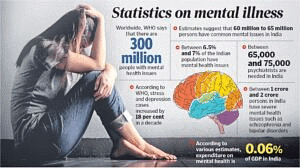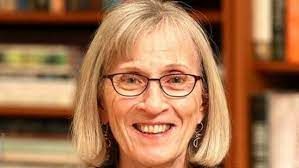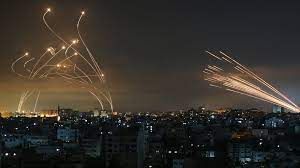UPSC Daily Current Affairs - 10th October 2023 | Current Affairs & Hindu Analysis: Daily, Weekly & Monthly PDF Download
GS-I
Mount Kun
Subject: Geography
Why in News?
One soldier died and three are missing after a group of Indian Army mountaineers was recently caught in an avalanche on Mount Kun in Ladakh.
About Mount Kun:
- Mount Kun, with a height of 7077 meters, is the second-highest peak of the Nun Kun massif.
- The massif is located near Sankoo in the Suru valley, Kargil district, Ladakh.
- The twin peaks of Nun (7135 meters) and Kun are separated by a snow plateau that extends for around 4 kilometers.
- They are among the highest peaks in the Zanskar Range on the Indian side of the Line of Control.
- These two towering peaks and their satellites; Barmal, White Needle and Pinnacle Peak form a horseshoe above the Suru river on the boarder of Kashmir and Zanskar.
- Mountaineering:
- The first person to climb the Kun peak was Italian mountaineer Mario Piacenza in the year 1913.
- However, it took 58 years for an Indian Army Expedition to successfully climb the mountain again.
- The climb to the summit is technically challenging and demands extensive knowledge of mountaineering techniques like using ice axes, roping up procedures, crampons, and jumar climbing.
Key Facts about Zanskar Range:
- The Zanskar Range is situated in the Ladakh region of northern India.
- It lies to the north of the Great Himalayan Range and runs parallel to it.
- The range stretches for approximately 400 kilometers (250 miles) from the western end of the Indian state of Himachal Pradesh to the eastern border of Ladakh with Tibet.
- It separates Ladakh from the valleys of Kashmir and the Chenab River on one end, and Kinnaur from Spiti in the Himachal Pradesh region.
- Elevation:
- The average height is about 6,000 m (19,700 ft).
- The highest peak in the Zanskar Range is Kamet, which is 7,756 meters (25,446 feet) high.
- Passes: Most important passes are Zojila, Shipki, Lipu Lekh (Lipulieke), and Mana.
- Rivers:
- Many rivers originating in different branches of this range flow northward, and join the great Indus River.
- These rivers include Shingo River, Zanskar River, Hanle River, Suru River (Indus), and Khurna River.
Source: Indian Express
GS-II
Sri Lanka to take over as Chair of Indian Ocean Rim Association (IORA)
Subject: International Relations

Why in News?
Sri Lanka is set to take over Chair of the Indian Ocean Rim Association (IORA) succeeding Bangladesh.
- It will hold this prestigious position for the next two years.
About Indian Ocean Rim Association (IORA)
- Establishment: Founded in 1997, IORA serves as a regional forum aimed at fostering understanding and mutually beneficial cooperation through a consensus-based, non-intrusive approach.
- Membership: IORA comprises 23 member states, including Australia, Bangladesh, Comoros, India, Indonesia, Iran, Kenya, Madagascar, Malaysia, Maldives, Mauritius, Mozambique, Oman, Seychelles, Singapore, Somalia, South Africa, Sri Lanka, Tanzania, Thailand, UAE, and Yemen.
- Secretariat: The association’s Secretariat is based in Cyber City, Ebene, Mauritius, responsible for managing, coordinating, servicing, and monitoring policy decisions, work programs, and projects adopted by member states.
Significance of IORA
- IORA’s significance is underscored by the Indian Ocean’s pivotal role in global trade, handling half of the world’s container ships, one-third of bulk cargo traffic, and two-thirds of oil shipments.
- It forms the lifeline of international trade and transport, controlling major sea-lanes.
Agenda for Collaborative Action
The Council of Ministers will engage in discussions to foster collaboration across six priority areas highlighted by the IORA:
- Trade and Investment
- Maritime Safety and Security
- Fisheries Management
- Disaster Risk Management
- Blue Economy
- Strengthening Regional Ties
Strategic Significance for Sri Lanka
- Navigating Geopolitical Dynamics: Sri Lanka often finds itself managing complex strategic interests involving India and China within the Indian Ocean Region, positioning it as a crucial player in the IORA.
- Regional Inclusivity: Sri Lanka’s active participation in the forum aligns it with neighboring nations, fostering regional inclusivity and cooperation. This engagement extends to countries such as Pakistan, Myanmar, Bangladesh, Nepal, and Afghanistan.
Source: The Hindu
The State of India’s Scheduled Areas
Subject: Polity and Governance

Why in News?
India’s 705 Scheduled Tribe (ST) communities – making up 8.6% of the country’s population – live in 26 States and 6 UTs.
Constitutional provision regarding administration of Scheduled Areas
- Article 244, pertaining to the administration of Scheduled and Tribal Areas, is the single most important constitutional provision for STs.
- Articles 244(1) provides for the application of Fifth Schedule provisions to Scheduled Areas notified in any State other than Assam, Meghalaya, Tripura, and Mizoram.
- The Sixth Schedule applies to these states as per Article 244(2).
A place for ST communities
- Scheduled Areas cover 11.3% of India’s land area, and have been notified in 10 States:
- Andhra Pradesh, Telangana, Odisha, Jharkhand, Chhattisgarh, Madhya Pradesh, Rajasthan, Gujarat, Maharashtra, and Himachal Pradesh.
- STs left out
- As per various Adivasi organisations, villages have been left out in the 10 States with Scheduled Areas and in other States with ST population.
- As a result, 59% of India’s STs remain outside the purview of Article 244.
- They are denied rights under the laws applicable to Scheduled Areas, including the Right to Fair Compensation and Transparency in Land Acquisition, Rehabilitation and Resettlement Act 2013 and the Biological Diversity Act 2002.
- In 1995, the Bhuria Committee, constituted to recommend provisions for the extension of panchayat raj to Scheduled Areas, recommended including these villages, but this is yet to be done.
- The absence of viable ST-majority administrative units has been the standard bureaucratic response.
- This argument has been used to demand the denotification of parts of Scheduled Areas where STs are now a minority due to the influx of non-tribal individuals.
Scheduled Area governance
- Tribal Advisory Council
- The President of India notifies India’s Scheduled Areas. States with Scheduled Areas need to constitute a Tribal Advisory Council with up to 20 ST members.
- They will advise the Governor on matters referred to them regarding ST welfare.
- The Governor will then submit a report every year to the President regarding the administration of Scheduled Areas.
- Role of Governor
- The Governor can repeal or amend any law enacted by Parliament and the State Legislative Assembly in its application to the Scheduled Area of that State.
- The Governor can also make regulations for a Scheduled Area, especially to prohibit or restrict the transfer of tribal land by or among members of the STs, and regulate the allotment of land to STs and money-lending to STs.
- Provisions of the Panchayats (Extension to Scheduled Areas) Act, or PESA 1996
- PESA empowered the gram sabhas to exercise substantial authority through direct democracy.
- It stated that structures at the higher level do not assume the powers and authority of the gram sabha.
- The Scheduled Tribes and Other Traditional Forest Dwellers (Recognition of Forest Rights) Act – a.k.a. FRA – 2006
- Here, too, the gram sabhas are the statutory authority to govern the forests under their jurisdiction.
Who decides a Scheduled Area?
- The Fifth Schedule confers powers exclusively on the President to declare any area to be a Scheduled Area.
- In 2006, the Supreme Court held that the identification of Scheduled Areas is an executive function.
The identity of a Scheduled Area
- Neither the Constitution nor any law provides any criteria to identify Scheduled Areas.
- But based on the 1961 Dhebar Commission Report, the guiding norms for their declaration are:
- preponderance of tribal population,
- compactness and reasonable size of the area,
- a viable administrative entity such as a district, block or taluk, and
- economic backwardness of the area relative to neighbouring areas.
- No law prescribes the minimum percentage of STs in such an area nor a cut-off date for its identification.
Various recommendations on identity of a Schedule Area
- 2002 Scheduled Areas and Scheduled Tribes Commission
- It had recommended that all revenue villages with 40% and more tribal population according to the 1951 census may be considered as Scheduled Area on merit.
- Bhuria Committee
- The Bhuria Committee recognised a face-to-face community, a hamlet or a group of hamlets managing its own affairs to be the basic unit of self-governance in Scheduled Areas.
- But it also noted that the most resource-rich tribal-inhabited areas have been divided up by administrative boundaries, pushing them to the margins.
- Enactment of PESA settles this debate
- PESA’s enactment finally settled this ambiguity in law. It defined village and empowered gram sabhas.
- However, gram sabhas are yet to demarcate their traditional or customary boundaries on revenue lands in the absence of a suitable law.
Way forward
- Any living areas or groups of living areas in states and union territories where Scheduled Tribes (STs) are the largest community should be declared as Scheduled Areas, even if they are not connected.
- These areas should also include forest lands where the Forest Rights Act of 2006 applies, and the boundaries within regular lands as defined by the state laws.
- Additionally, the boundaries of villages, local governing bodies (panchayats), regions (talukas), and districts should be adjusted to make sure that these areas are fully recognized as Scheduled Areas.
Source: The Hindu
Mental health and the floundering informal worker
Subject: Polity

Why in News?
World Mental Health Day, observed on October 10, underscores the theme of ‘mental health as a universal human right.’
Central idea
- While the World Mental Health Day theme highlights the importance of mental health for all, it’s crucial to address the often-overlooked mental health challenges of India’s informal workers. This necessitates proactive policies aligning with the Sustainable Development Goals (SDGs).
The Global Perspective
- According to the International Labour Organization (ILO), approximately 15% of working-age adults globally live with a mental disorder.
- Decent work can positively influence mental health, but unemployment, unstable employment, workplace discrimination, and unsafe working environments pose significant risks to mental health.
- Informal workers, particularly those in low-paid and precarious jobs, often face psychosocial risks that compromise their mental well-being.
India’s Informal Workforce
- India’s informal workforce constitutes over 90% of the total working population. These workers endure unsafe conditions, work long hours, and have limited access to social and financial protections.
- Discrimination and gender disparities are prevalent, with over 95% of working women engaged in informal, low-paying, and precarious employment.
- The mental health of informal workers is further undermined by patriarchal structures and practices in their social and familial spaces.
Challenges faced by the informal workforce in India
- Lack of Formal Protections: Informal workers often lack legal and social protections. They work without employment contracts, job security, or access to benefits like health insurance and paid leave.
- Unsafe Working Conditions: Many informal workers labor in hazardous environments, increasing their risk of occupational health and safety issues.
- Long Working Hours: Informal workers frequently work long hours, often without clear boundaries between work and personal life, affecting their physical and mental well-being.
- Limited Access to Social Protections: These workers have limited access to social safety nets, making them vulnerable to economic shocks such as illness or job loss.
- Gender Disparities: Gender disparities are pronounced in the informal sector, with many women engaged in low-paying and precarious employment. Discrimination and patriarchal structures exacerbate these challenges.
- Precarious Employment: Informal work is characterized by its precarious nature, including irregular income, job insecurity, and uncertainty about future employment.
- Income Inequality: Informal workers often earn lower wages than their formal sector counterparts, contributing to income inequality.
Youth and Unemployment
- Youth unemployment is a pressing issue in India, significantly affecting mental health.
- Many young workers are forced into precarious and informal work due to desperation, accepting lower pay and poorer working conditions.
- Unemployment rates are particularly high among educated young women, reaching 42%.
- Given India’s demographic dividend, it is crucial to prioritize employment quality and long-term social security for this population.
Aging Workforce and Vulnerability
- India is expected to become an aging society in two decades, yet there is no clear social security plan for this growing demographic group.
- The Census of India 2011 reveals that 33 million elderly individuals continue working in informal sectors post-retirement.
- This vulnerable group lacks financial and health-care security, which can severely impact their physical and mental health.
Social Security and Mental Health
- Informal workers face mental distress due to accumulating debt and rising health-care costs: Informal workers often experience financial strain due to their precarious employment, leading to the accumulation of debt and increased healthcare expenses.
- Interconnectedness of Economic and Mental Health Factors: Mental health and well-being are interconnected with factors such as food security, access to livelihoods, and financial stability. These factors play a significant role in determining the mental health of informal workers.
- Post-COVID-19 Recovery Challenges: A study conducted among informal workers in Delhi, primarily migrants, reveals that the recovery post-COVID-19 remains uneven among different cohorts of informal workers. Many still report food insecurity, skipped meals, or reduced consumption, which can have detrimental effects on their mental health.
- Impact of Government Schemes: While some social security schemes have received increased funding, others, like the MNREGS, have seen reductions in funding. Adequate funding of employment guarantee programs can positively impact the mental health outcomes of informal workers.
- High Suicide Rates Among Daily Wage Earners: The National Crime Records Bureau (NCRB) reported that in 2021, 26% of people who died by suicide were daily wage earners. This statistic highlights the mental health challenges faced by this group and the need for better support and social security measures.
- Types of Social Security Measures: Social security measures can take various forms, including:
- Promotional: Aimed at augmenting income.
- Preventive: Intended to forestall economic distress.
- Protective: Designed to ensure relief from external shocks.
- The Code on Social Security 2020: It is necessary to revisit the Code on Social Security 2020, highlighting that it doesn’t explicitly state the goal of universalizing social security in India, particularly for informal workers.
Way Forward: Improving Mental Health Care
- Low Budgetary Allocation for Mental Health: India’s budgetary allocation for mental health currently stands at less than 1% of the total health budget. This allocation has predominantly focused on digital mental health programs.
- Importance of Community-Based Care: The World Mental Health Report 2022 emphasizes the need to strengthen community-based care as part of a comprehensive mental health approach.
- Human Rights-Oriented Care: To address mental health effectively, it is important to provide people-centered, recovery-oriented, and human rights-oriented care.
- Urgent Need for Proactive Policies: There is a pressing need for proactive policies that not only recognize the importance of mental health but also take concrete actions to improve mental health care in India.
- Basic Human Right to Good Health: Mental health is a basic human right, and it emphasizes the need to uphold this right by providing access to quality mental health care.
Alignment with Sustainable Development Goals (SDGs)
- SDG 3: Good Health and Well-Being: Improving mental health care aligns with SDG 3, which aims to ensure good health and well-being for all.
- SDG 8: Decent Work for All/Economic Growth: Addressing mental health issues among informal workers is crucial for advancing SDG 8, which focuses on decent work for all and economic growth.
Conclusion
- Proactive policies and comprehensive social security measures can uplift the mental well-being of this marginalized group, promoting a society where mental health is indeed a universal human right. Achieving this goal will contribute to the realization of the Sustainable Development Goals and ensure a healthier, more equitable future for all.
Source: The Hindu
GS-III
2023 Nobel Prize in Economic Sciences
Subject: Economics

Why in News?
The Nobel economics prize was awarded to Harvard professor Claudia Goldin for research that has advanced the understanding of the gender gap in the labor market.
- She has studied 200 years of women’s participation in the workplace, showing that despite continued economic growth, women’s pay did not continuously catch up to men’s.
- She also pointed that a divide still exists despite women gaining higher levels of education than men.
Economics Nobel
- About
- A Nobel Prize in Economics was not part of Alfred Nobel’s will in 1895 that established the other prizes.
- The prize is based on a donation received by the Nobel Foundation in 1968 from Sveriges Riksbank (Sweden’s central bank), on the bank’s 300th anniversary.
- It is formally called the Sveriges Riksbank Prize in Economic Sciences in Memory of Alfred Nobel.
- Economics Nobel and women
- Goldin is only the third woman to win this honour.
- In 2009, Elinor Ostrom got the award along with Oliver E Williamson, while in 2019, Esther Duflo shared it with Abhijit Banerjee and Michael Kremer.
News Summary:2023 Nobel Prize in Economic Sciences
Key findings of Claudia Goldin
- Older data gave more perspective
- Goldin reached back to older data to reveal that before industrialisation, more women were likely to have been involved in economic activity related to agriculture and various cottage industries.
- With greater industrialisation, work was concentrated in factories, and women found it difficult to leave their homes and travel to work.
- This trend reversed in the early 20th century, with the growth of the services sector.
- The limitations of marriage
- She found that by the beginning of the 20th century, while around 20% of women were gainfully employed, the share of married women was only 5%.
- Goldin noted that legislation known as marriage bars often prevented married women from continuing their employment as teachers or office workers.
- Despite an increasing demand for labour, married women were excluded from parts of the labour market.
- This type of legislation peaked during the 1930s’ Great Depression and the years following it.
- Another important factor in the slow reduction of the gap between men’s and women’s rates of employment, namely women’s expectations for their future careers.
- Women’s expectations were based on the experience of their mothers, and thus their educational and professional decisions were not taken with the expectation of having a long, uninterrupted, and fruitful career.
- Contraceptive pills
- By the end of the 1960s, as easy-to-use contraceptive pills became more popular, women could exercise greater control over childbirth and actually plan careers and motherhood.
- Women also ventured beyond the services sector, studying subjects like law, economics, and medicine.
- Now, women were catching up in terms of education and fields of employment. However, one glaring gap still remained and continues to this day — the gender-based pay gap.
- Pay gap and parenthood
- Till the time men and women worked in factories, where the pay depended on the day’s countable output, the pay gap was not too high.
- It became wider when monthly pay contracts came into the picture.
- One factor significantly impacted how men were paid versus women — childbirth.
- As women had to shoulder more of the parenting responsibilities once a child was born, they were also punished for this at the work front in terms of a slower rise on the pay scale.
Significance of Goldin’s research
- Goldin’s research does not offer solutions, but it allows policymakers to tackle the entrenched problem.
- She explains the source of the gap, and how it has changed over time and how it varies with the stage of development.
Source: The Hindu
Asiatic Wild Dog (Dhole)
Subject: Environment and Ecology

Why in News?
The activity of the Asiatic wild dog in Assam’s Manas National Park showed the highest temporal overlap with the leopard .
About Asiatic Wild Dog (Dhole)
- Physical features : They are large carnivores that resemble a small wolf or a domestic dog in size; however, unlike dogs they have a rust-red to brown coat and the ears are rounded with fur
- Habitat Ecology: They inhabit a variety of habitat types that include primary, secondary and degraded forms of tropical dry and moist deciduous forests, evergreen and semi-evergreen forests, dry-thorn forests, scrublands etc.
- In India, the species inhabits tropical dry and moist deciduous forest supporting adequate prey base
- It is the only endangered wild pack-living canid in the tropical Indian forests.
- Distribution : It has a large distribution range south and central Asia and Russia.
- In India, the species inhabits the southern part of the Indo-Gangetic plains, Eastern and Western Ghats and most parts of North-Eastern India
- It also occurs in some parts of Ladakh and Kashmir.
- Threats : Loss of prey base, habitat loss and transformation
- vulnerable to multiple disease threats from domestic dogs
- Protection status
- IUCN Red list status : Endangered
- It is included in CITES – Appendix II
Source: The Hindu
Iron Dome
Subject: Science and Technology

Why in News?
The Iron Dome, Israel’s most advanced defense system has come into the limelight due to the recent Palestine and Israel battles.
What is Iron Dome?
- Background:
- The genesis of the Iron Dome goes back to the 2006 Israeli-Lebanon war when Hezbollah fired thousands of rockets into Israel.
- The Iron Dome was deployed in 2011.
- Development:
- It was developed by Israel Aerospace Industries and Rafael Advanced Defense Systems.
- Features:
- It is a short-range, ground-to-air, air defense system that includes radar and Tamir interceptor missiles that track and neutralize any rockets or missiles.
- It is used for countering rockets, artillery & mortars (C-RAM) as well as aircraft, helicopters, and unmanned aerial vehicles.
- It is capable of being used in all weather conditions, including during the day and night.
- The defense system has a range of 70 kilometers.
What makes it so effective?
- The Iron Dome has three main systems that work together to provide a shield over the area where it is deployed, handling multiple threats.
- It has a detection and tracking radar to spot any incoming threats, a battle management and weapon control system (BMC), and a missile firing unit.
How does it work?
- Iron Dome consists of a truck that fires radar-guided missiles to counter short-range threats including rockets, mortars, and drones.
- The all-weather system does not shoot down all the rockets on Israel’s radar.
- It uses an Artificial Intelligence mechanism to first determine whether an incoming rocket is an interpreted threat and will hit a populated area, if not the Iron Dome ignores the rocket and lets it enter Israel’s air space.
Other Air Defence Systems
- Terminal High Altitude Area Defense (THAAD) (US)
- S-400 Air Defence System (Russia)
Source: Indian Express
|
38 videos|5293 docs|1118 tests
|





















